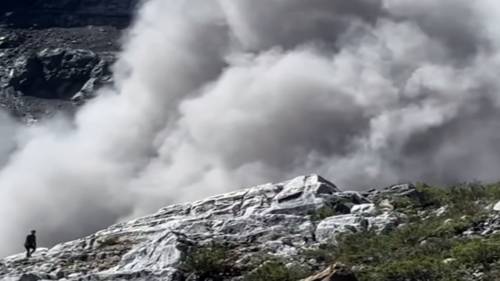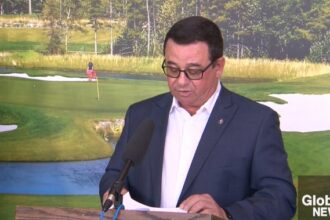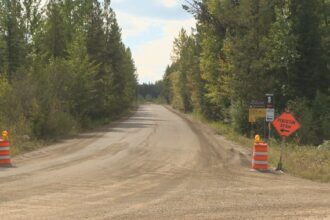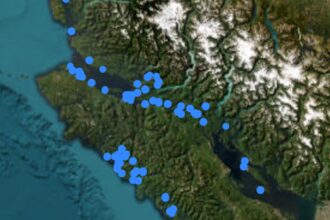In a somber revelation that has shaken both the outdoor community and safety experts, Parks Canada officials confirmed Wednesday that the deadly rock slide in Banff National Park that claimed three lives earlier this month was a tragic natural event that could not have been foreseen or prevented through standard monitoring protocols.
The catastrophic slide occurred on May 17 along the popular Lake Minnewanka trail, when an estimated 1,000 cubic meters of limestone—roughly equivalent to 100 dump trucks of material—suddenly detached from a cliff face with no warning signs. The victims, identified as experienced hikers from Calgary, were reportedly following all safety guidelines when the massive section of mountainside gave way.
“After thorough geological assessment, we’ve determined this was what we classify as a spontaneous failure event,” said Dr. Megan Winters, lead geologist with Parks Canada’s risk assessment team. “There were no discernible precursor indicators that our routine monitoring could have detected. The fracture occurred along a previously stable formation that showed no visible stress markers during our seasonal inspections.”
The investigation revealed that unprecedented weather patterns in the region likely contributed to the deadly incident. Banff National Park experienced record temperature fluctuations this spring, with rapid freeze-thaw cycles that experts believe may have accelerated internal rock fracturing beyond visible detection.
“What makes this particularly challenging from a prevention standpoint is that the rockface had been stable for decades,” explained Richard Thompson, mountain safety coordinator for Parks Canada. “Our monitoring systems are designed to identify progressive deterioration, but in this case, the combination of geological factors and unusual weather conditions created a situation where failure occurred without the typical warning signs.”
The incident has prompted Parks Canada to launch a comprehensive review of their risk assessment protocols across all national parks. While officials maintain that such spontaneous geological events remain extremely rare, they acknowledge the need to adapt monitoring technologies as climate change potentially increases the frequency of these dangerous occurrences.
“We’re investing in advanced remote sensing equipment and expanding our use of LiDAR technology to improve detection capabilities,” said Catherine Morris, Director of Visitor Safety for Parks Canada’s mountain parks. “While we can never eliminate all risk in wilderness areas, we’re committed to implementing every reasonable measure to protect visitors.”
For the families of the victims, these explanations offer little comfort. Martin Sinclair, whose brother was among those killed, expressed frustration at what he perceives as inadequate safety measures. “If they know certain areas are prone to slides, why aren’t there more warning signs or seasonal closures?” he questioned during a press conference.
Parks Canada has temporarily closed several popular hiking routes in the eastern section of Banff National Park while expanded assessments are conducted. Officials expect most trails to reopen by early July, though the Lake Minnewanka shoreline path near the slide location will remain closed indefinitely.
The incident serves as a stark reminder of nature’s unpredictable power, even in carefully managed wilderness areas. Visitors to national parks are being urged to check trail conditions before departing, carry emergency communication devices, and always inform others of their planned routes and expected return times.
As our climate continues to shift and potentially destabilize previously secure geological formations, how will we balance our desire to experience nature’s grandeur with the inherent risks it presents? The answer may require both technological advancement and a renewed respect for wilderness that acknowledges its fundamental unpredictability.










